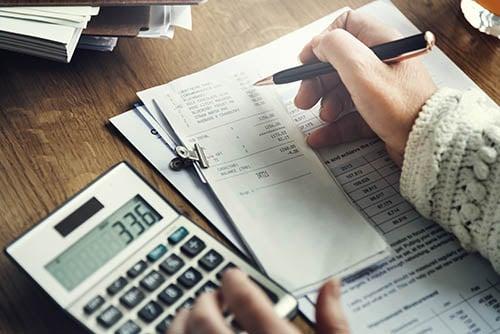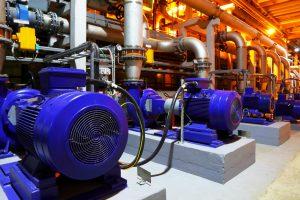
Depreciation - the hidden replacement costs
Depreciation. Accountants and the media often talk about the need for businesses to depreciate fixed assets–company cars, office equipment like copiers, or production equipment essential for business functions, etc. But what exactly does depreciating these items mean?
Assets don’t last forever and over time their value diminishes. Therefore, the amount of the item recorded on your business income statement reduces yearly. Under Generally Accepted Accounting Principles (GAAP), an entity is required to take an asset that has been capitalized and systematically (and rationally) allocate the cost to the income statement over the life of the asset.
Many times the life of an asset is based on what you, the owner, believes is the actual life should be. If you are the type of owner who gets ten years out of a pickup truck, then using ten years to depreciate the truck is reasonable.
Most of the time when a company depreciates an asset they use the straight-line method. As this name indicates, this method simply divides the total cost of the asset by the estimated life and takes that amount as depreciation expense every year. Sounds reasonable. But what if you are in an industry that is harder on equipment?
For example, in the oil and gas field, access to much of the field work can be over rough roads and difficult to reach locations. Depreciating a truck over five years using straight-line method can be reasonable in this circumstance.
While the straight-line method is generally accepted, there are numerous types of methods a business can utilize to recognize depreciation expense. This is a conversation our CPAs can assist with.
You may ask, if depreciation is just a non-cash accounting entry, why use a method of depreciation other than straight-line? Here’s the thing, a company should not be looking at depreciation as just an expense that hits the income statement on a monthly basis. Instead, depreciation should be viewed as a cost the company will incur sometime in the future.
Replacement Costs
Our CPAs understand that depreciation should be considered a future replacement cost. A company putting aside cash equal to the depreciation expense every month is extremely rare. But when you analyze the future of your company, you need to cash flow when you are going to need to replace an asset. This goes into the concept of external funds needed calculation–a fancy way of saying that when you do replace the asset, are you going to fund with cash or debt? How much does the replacement asset need to produce to keep the organization on track?
When we sit down to discuss depreciation with you, we’ll cover:
-
-
- Is the straight line method reasonable for your business?
- Is the life of the asset too long or too short?
- What can you do to allow for replacement of the asset in the future so operations aren’t compromised?
-
Depreciation can seem like a mundane conversation, but it can have long lasting impact on your company’s financial stability. Our virtual CFOs talk to all of our clients about depreciation and how planning for your company’s future now will lead to greater success in the future. Are you ready to let us help your company prepare for success? We’re ready to help.
Steven D Hovland, CPA, Cr.FA is a certified public and forensic accountant, Hovland brings to his duties more than 20 years of experience in audit and accounting services as well as forensic investigations.
Depreciation is the systematic allocation of the cost of a tangible asset over its useful life, reflecting its decline in value as it’s used.
Recording depreciation gives a more accurate picture of asset value, helps with tax deductions, and ensures your financial statements are reliable.
Replacement cost is the current cost to purchase or reproduce an asset that can serve the same function as the existing one.
While depreciation tracks the loss in value of an asset over time, replacement cost tells you what it would cost to replace that asset today. Both help with planning for future investments.
Depreciation reduces the book value of fixed assets and is recognized as an expense on your income statement.
Budgeting for replacement costs ensures you’re prepared for future capital expenditures and can maintain or upgrade essential equipment without disrupting operations.
Yes! Common methods include straight-line, declining balance, and units of production. Each affects how depreciation expense is recognized annually.
Learn More About Our Virtual Controller Services
Additional information on this topic:

Financial Forecasting 101
Financial Forecasting 101 Most of us have experienced a family trip that did not go quite as planned, especially if it’s a road trip. The

What is a Key Performance Indicator? | CFO Services
What is a Key Performance Indicator? Small and medium business owners are pressed for time—they wear multiple hats while keeping their customers, vendors and employees

What is Free Cash Flow?
What is Free Cash Flow? Businesses survive and thrive on cash. Cash allows businesses to take risks, seek new opportunities, and to strengthen their financial

